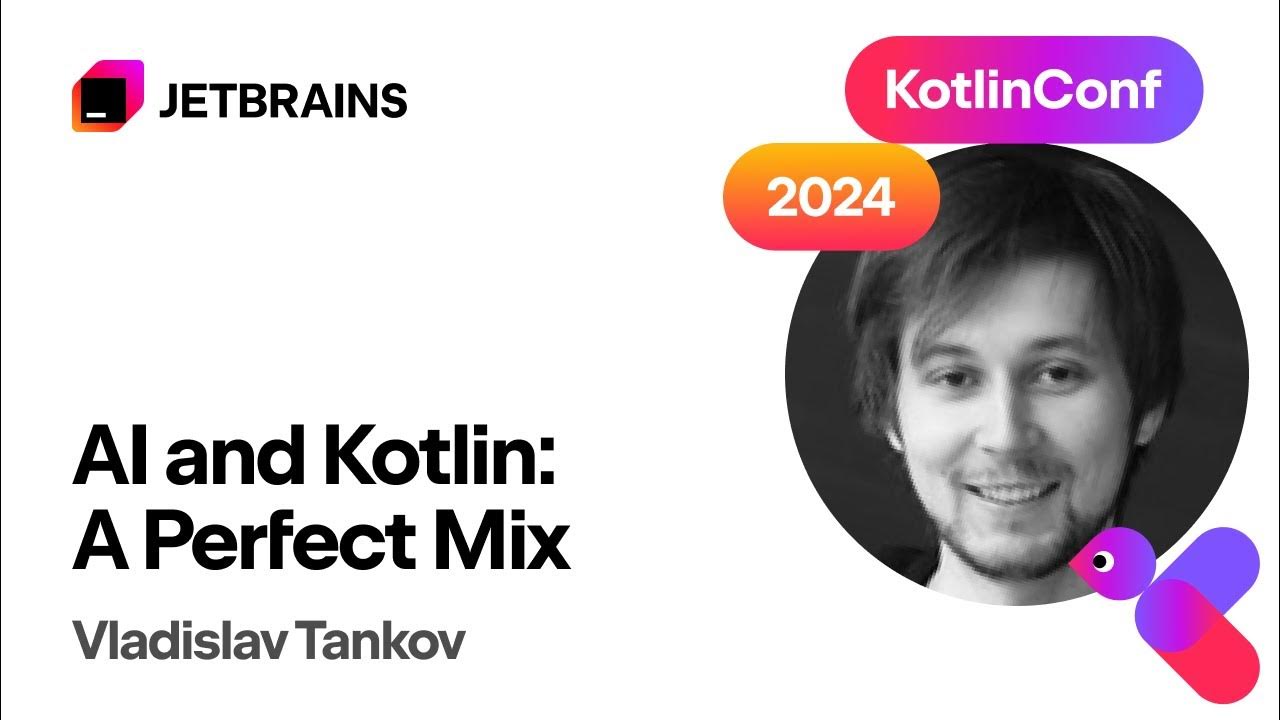Kotlin in 100 Seconds
Summary
TLDRKotlin, introduced by JetBrains in 2011 and with its first stable release in 2016, is a statically typed language that offers a more concise syntax and modern features like type inference, null safety, and coroutines. It's interoperable with Java, allowing developers to incrementally adopt it. Kotlin supports multi-platform development, being able to compile to JVM, native code, and JavaScript. Recognized as Google's preferred language for Android development since 2019, it simplifies asynchronous programming. The language promotes functional programming patterns and reduces boilerplate with features like data classes and extension functions.
Takeaways
- 😀 Kotlin is a statically typed, multi-paradigm programming language designed as a more concise and modern alternative to Java.
- 🌐 It compiles to bytecode for the Java Virtual Machine (JVM), allowing it to run on any platform that supports JVM.
- 🔍 Kotlin was announced in 2011 by JetBrains and had its first stable release in 2016.
- 🏝️ Named after Kotlin Island in Russia, it gained a mascot in October 2021, although it remains unnamed.
- 🔄 One of Kotlin's key features is its interoperability with existing Java code, allowing for a gradual adoption without discarding existing codebases.
- 📱 It can compile to native code and JavaScript, enabling the development of multi-platform applications.
- 📱 Since 2019, Google has named Kotlin as the preferred language for Android development, highlighting its influence in the mobile development community.
- 🔄 Kotlin introduces coroutines, a feature that simplifies writing asynchronous, non-blocking code, which is crucial for mobile app development.
- 💻 To start with Kotlin, developers typically use an IDE like IntelliJ IDEA, which is developed by JetBrains, the same company behind Kotlin.
- 📝 Kotlin's syntax is designed to be more enjoyable and less verbose than Java, with features like type inference and optional semicolons.
- 🔧 It supports object-oriented patterns and introduces functional programming capabilities, such as extension functions and first-class functions.
Q & A
What is Kotlin and what is it designed to be?
-Kotlin is a statically typed, multi-paradigm programming language designed as a better alternative to Java. It compiles to bytecode that runs on the Java Virtual Machine (JVM) but offers a more concise syntax and modern language features.
Who announced Kotlin and when was the first stable release?
-Kotlin was announced by JetBrains in 2011, with the first stable release coming in 2016.
What is the significance of Kotlin's name and its mascot?
-Kotlin is named after Kotlin Island in Russia. It got a mascot in October 2021, although it remains unnamed, symbolizing the language's connection to its geographical namesake and its growing community.
How does Kotlin's interoperability with Java benefit developers?
-Kotlin's interoperability with existing Java code allows developers to gradually adopt Kotlin without discarding their existing Java codebase, facilitating a smoother transition and codebase integration.
Besides the JVM, what other platforms can Kotlin compile to?
-In addition to the JVM, Kotlin can also compile to native code and JavaScript, enabling the development of multi-platform applications.
Why is Kotlin preferred for Android development?
-Kotlin is preferred for Android development due to its influence in the community and Google's endorsement since 2019, recognizing it as the preferred language over Java for Android app development.
What is a 'killer feature' of Kotlin that benefits mobile developers?
-Coroutines is a 'killer feature' of Kotlin that provides a simplified way to write asynchronous, non-blocking code, which is a common requirement for mobile developers.
How does Kotlin simplify the process of starting a new project?
-To start a new Kotlin project, developers create a file with a '.kt' extension and use the 'fun' keyword to define a main function, which simplifies the process compared to Java's 'public static void main'.
How does Kotlin handle variable declaration and type inference?
-In Kotlin, variables are declared with the 'var' keyword, and the type can be inferred automatically by the compiler or explicitly specified. Variables are non-nullable by default, but can be made nullable with a '?'.
What are some functional programming capabilities that Kotlin offers which Java cannot?
-Kotlin supports functional programming features like extension functions, allowing modification of a class's behavior without inheritance, and first-class functions, which can be stored as variables, passed as arguments, or used anonymously with lambdas.
How does Kotlin reduce boilerplate code in object-oriented programming?
-Kotlin reduces boilerplate code with features like data classes, which automatically generate constructors, getters, setters, and other methods, and destructuring, which allows for concise and efficient code when accessing object values.
How can a developer compile Kotlin code into a JAR file?
-A developer can compile Kotlin code into a JAR file by using the Kotlin compiler through the terminal, after writing the code in a '.kt' file and organizing it using Kotlin's syntax and features.
Outlines

Esta sección está disponible solo para usuarios con suscripción. Por favor, mejora tu plan para acceder a esta parte.
Mejorar ahoraMindmap

Esta sección está disponible solo para usuarios con suscripción. Por favor, mejora tu plan para acceder a esta parte.
Mejorar ahoraKeywords

Esta sección está disponible solo para usuarios con suscripción. Por favor, mejora tu plan para acceder a esta parte.
Mejorar ahoraHighlights

Esta sección está disponible solo para usuarios con suscripción. Por favor, mejora tu plan para acceder a esta parte.
Mejorar ahoraTranscripts

Esta sección está disponible solo para usuarios con suscripción. Por favor, mejora tu plan para acceder a esta parte.
Mejorar ahora5.0 / 5 (0 votes)






